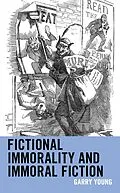It is commonplace for fictional content to depict immoral activities: the kidnapping of a politician, for example, or the elaborate theft of a national treasure, or perhaps the gruesome proclivities of a sadistic murderer. These and similar depictions can be found across a range of media, and in varying degrees of detail and realism. Fictional Immorality and Immoral Fiction examines potential conditions for transforming fictional immorality into immoral fiction, in order to establish what makes a depiction of fictional immorality and/or one's engagement with it immoral. To achieve this aim, Garry Young analyzes fictional content, its meaning, one's motivation for engaging with it, and the medium in which the fiction is presented (such as film, literature, theatre, video games) using philosophical inquiry. The end result is a systematic examination of fictional immorality, which contributes toward debates on the morality of depicting and engaging with fictional immorality, as well as the reach of censorship and other forms of prohibition, especially when the act depicted is of the kind that would be most egregious if carried out in reality.
Autorentext
Garry Young is senior lecturer in philosophy in the school of historical and philosophical studies at the University of Melbourne.
Inhalt
Chapter 1 Fictional Immorality and Immoral Fiction
Chapter 2The Metaphysics of Fictional Immorality
Chapter 3The Content of Fictional Immorality
Chapter 4The Meaning of Fictional Immorality
Chapter 5The Harm of Fictional Immorality
Chapter 6Is There Evidence of Harm?
Chapter 7Enjoying Fictional Immorality
Chapter 8Resisting Fictional Immorality
Chapter 9Poor Taste and Fictional Immorality
Chapter 10Historical Fictional and Fictional Immorality
Chapter 11A New Kind of Fiction
Chapter 12Fantasy and Fictional Immorality
Chapter 13It's not immoral, but it is in poor taste
Chapter 14Immoral Fiction and Censorship
